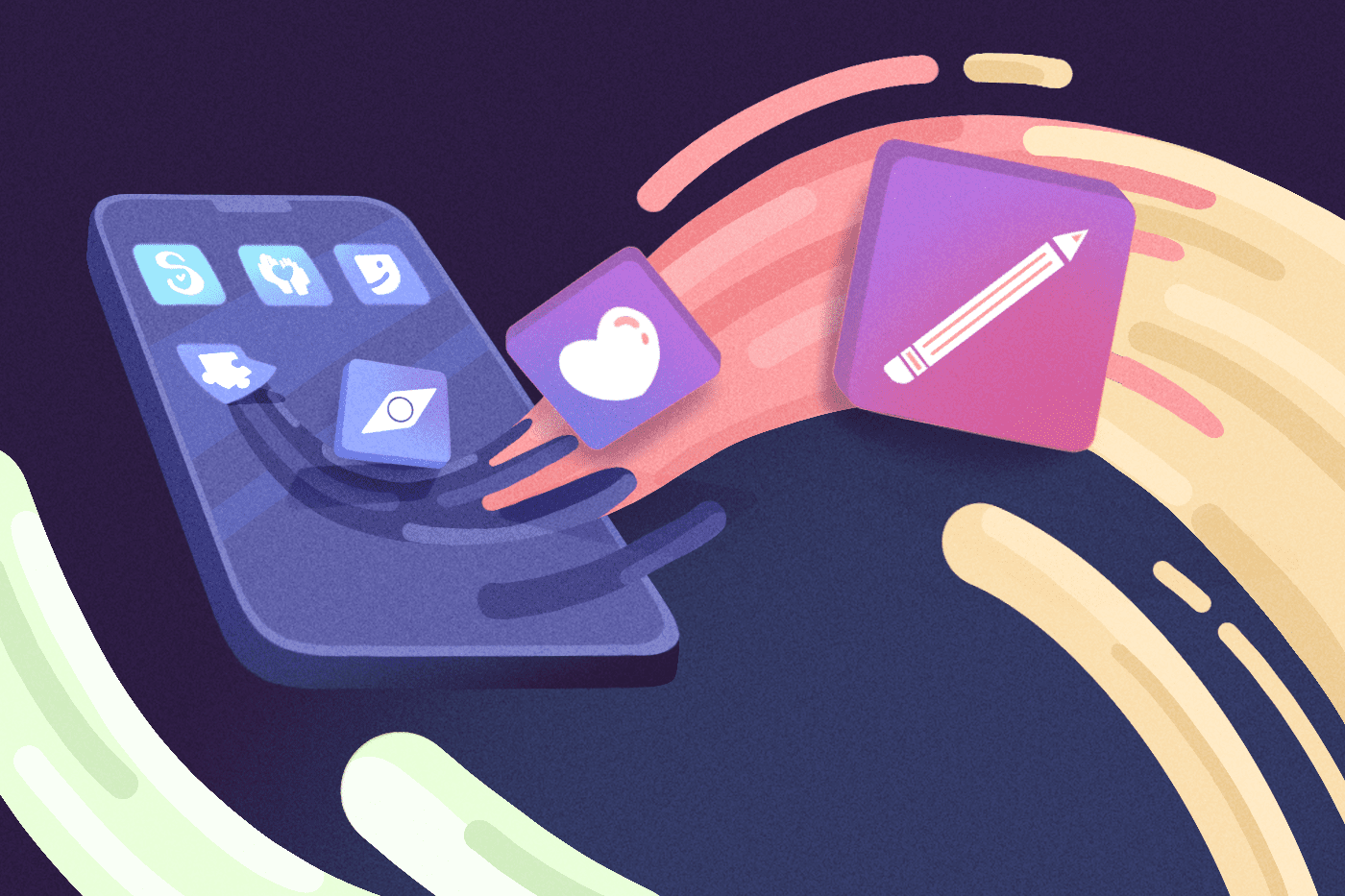Nonprofit Apps: How to Know if You Need One
- Why Build a Nonprofit App?
- What are the Advantages of Nonprofit Apps?
- Nonprofit Apps for Awareness Building
- Improve Your Data Collection
- Drive Donations
- What are the disadvantages of building an app for my nonprofit?
- They're Expensive
- Nonprofit Apps Require Ongoing Maintenance
- Keeping Track of Analytics is a Heavy Lift
- How to Scope a Nonprofit App Build
- Trust a marketing agency that specializes in nonprofits
Since just over 60% of all website traffic comes from mobile devices, it’s more important than ever to make sure your organization’s website is optimized for smartphones. For nonprofits in particular, mobile views made up over 54% of all website traffic in 2021.
Since competition for charitable dollars is tightening in the nonprofit world, it’s natural for nonprofit leaders to ask…

Why Build a Nonprofit App?
There are many use-cases that justify the cost of building an app (and the downloading of one). You may want to
- Store information for mobile users that they need ready access to (such as tickets, member numbers, or coupons associated with membership).
- Provide resources that mobile users would want to access quickly (such as maps, guides, or directories).
- Enhance the experience of interacting with your nonprofit in the real world, such as with guided audio tours of your facilities.
- Serve community members with phone notifications to keep them engaged.
- Manage a volunteer network and coordinate in-person events.
Knowing what problems you’re trying to solve with an app — and what alternative options there are to doing so — will help you decide if the investment is worth it.
What are the Advantages of Nonprofit Apps?
Once you’ve settled on your main motivation for building an app, you can start to think more broadly about what it can do for your organization. For instance, if you build an app mainly to help organize a volunteer network, you can still use it to prompt donations, remind people of important events, and provide other valuable resources to the user. Here’s a few general benefits of building a nonprofit app.
Nonprofit Apps for Awareness Building
500 million people visit Apple’s app store each day and there were over 111 billion app downloads from the Google Play store in 2021. A presence in these locations can help spread high-level awareness of your organization. That being said, nonprofit apps help build awareness best when they solve a problem for the user, but are then designed to promote deeper engagement with the organization. For instance, if you partner with a local business to offer a coupon via your app that incentivizes people to download it, you can then serve people notifications to help inform them of ongoing events or important milestones.
Improve Your Data Collection
Many nonprofits lag behind for-profit businesses when it comes to data collection. Offering a free app provides a valuable opportunity to gather information about potential donors that you can enter into your CRM. This info will help you segment your audience and send personalized messages to app users via email or other platforms in the future.
Drive Donations
When it comes to raising revenue online, removing barriers for donation is the name of the game. The easier it is for people to give, the better. Providing an app offers possible donors one more way to give and one more reminder right there on their smartphone that you’re hoping for their support. Push notifications are a valuable way to keep top of mind for your supporters as well. (Just don’t be as pushy as that Duolingo owl.)
But the statistics for online giving via mobile devices are a mixed bag. On the one hand, the percentage of online donations made from a phone or tablet has increased pretty steadily in the last decade from 9% of online donations in 2014 to 28% of online donations in 2021.
On the other hand, donations made from desktop devices still constituted over 75% of all online revenue in 2021, and the average gift made via phone or tablet ($46) was still significantly less than the average gift made via desktop ($75).
This suggests that while most big donors will gravitate toward using a desktop or other more traditional ways of giving, mobile devices are important for spreading general awareness of your organization and for boosting smaller contributions.
What are the disadvantages of building an app for my nonprofit?
Time for the sticker shock. The major disadvantage of building an app is…
They’re Expensive
One survey found that average app development costs between $40,000 and $60,000 for something basic and between $70,000 and $100,000 for something relatively complicated and feature-rich. That’s a big expense for smaller organizations — one that you wouldn’t want to take on lightly unless you have a definite plan for how the app will boost your bottom line.
If you want to go with something a little less custom but a lot less expensive, your fundraising software or other platforms for which you already pay may offer a mobile app that you can customize and then push out as your own. They handle the development costs and maintenance; you pay a fee to configure and then ongoing costs to use the app. This might be a quick way to “test the waters” on whether an app is a good idea for your organization, but it’s not without it’s time and energy investments, for sure. No app launch will be successful without a great marketing and communications strategy!
Nonprofit Apps Require Ongoing Maintenance
Unfortunately, an app won’t run itself. Once it’s up and running, it will require ongoing maintenance and technical support for software updates, fixing bugs, and particularly for maintaining data privacy.
If you choose to white-label another platform’s app, you’ll pay that organization to maintain the app, sometimes not at the pace you’d like and you’ll have no control of that, either.
Keeping Track of Analytics is a Heavy Lift
Nonprofits certainly know the meaning of accomplishing more with less. Time is tight — and so are budgets — so it’s going to be a lot of work to ask someone at the organization to take on the job of tracking analytics for your app. As we said above, there’s a lot of valuable information to be gleaned from your app about potential donors, but finding someone to gather and analyze that information can be an additional undertaking.
If your app isn’t integrated seamlessly with your CRM and donor management tools, the data you’re collecting can quickly get out of sync. Using a white-label app build to integrate can solve for this, but if you go with a custom app, you’ll need to ensure that the data syncs between the mobile and cloud-based versions of the app so you’ve always got the right data at hand.
How to Scope a Nonprofit App Build
Nonprofits have a lot of resources at their disposal, and sometimes it can be difficult to know where to begin. Here are some tips for getting started if you’re considering developing an app for your nonprofit.
Tip 1: Do Your Research
Before you spend anything, do your homework. Here are some things you want to investigate:
- Who’s your target persona?
- What features do they need?
- Consider where you’ll make your app available: will it be made for Android? For Apple?
- Do you competitors have apps? What do they offer?
- Who will build your app? Will you keep it in house? Or hire an agency?
Tip 2: Look at Some Examples
Before you meet with a developer, take some time to look at some of the best examples of nonprofit apps out there to figure out how you’ll want to model your own:
- The American Red Cross Blood Donor app
- The American Heart Association Heart Walk app
- The Charity Miles app
Tip 3: Understand Platform Options
Deciding how to build out your app will be a choice you make to compromise between your resources and your features. While there are many options for non-coders building out nonprofit apps, they generally also restrict how much you can do. By contrast, custom apps offer more options for users, but they tend to be more expensive. Here’s a few different options for app building that will help you understand what’s generally available:
- Glide is a no-code mobile app builder with a huge catalog of templates. Their nonprofit and education catalog includes help desks, calendars, audio tours, event managers, and much more.
- If you have someone in your organization who knows Python, you can use a framework like Flask to create an app interface for your Python program. This is great for data analytics solutions in app form.
- You can hire a web development or digital marketing agency to build an app that meets all of your needs and aligns with your branding guidelines.
Trust a marketing agency that specializes in nonprofits
Depending on the needs of your organization, developing an app might be the right way to go. On the other hand, further streamlining your website’s mobile performance might work just as well and save you a lot of time and money.
As you increase your organization’s online presence, it’s important to have expert guidance. At Big Sea, we’ve helped boost online donations for countless nonprofit organizations, and we can do the same for you. From grassroots community programs to cultural organizations to big national brands — we’ve raised hundreds of thousands for nonprofits looking to spread awareness and boost their fundraising efforts.
Reach out today to find out what we can do for your organization.


